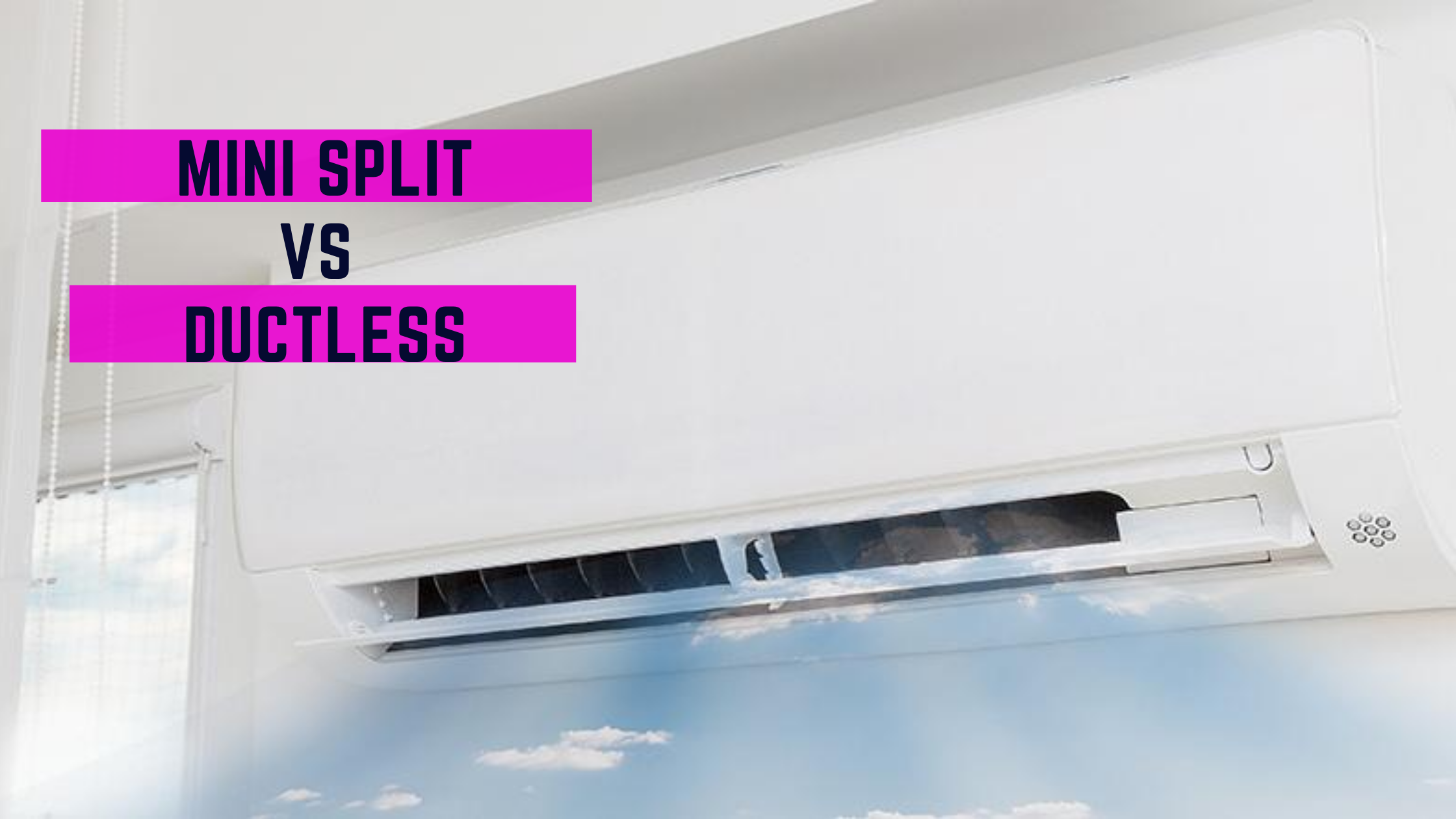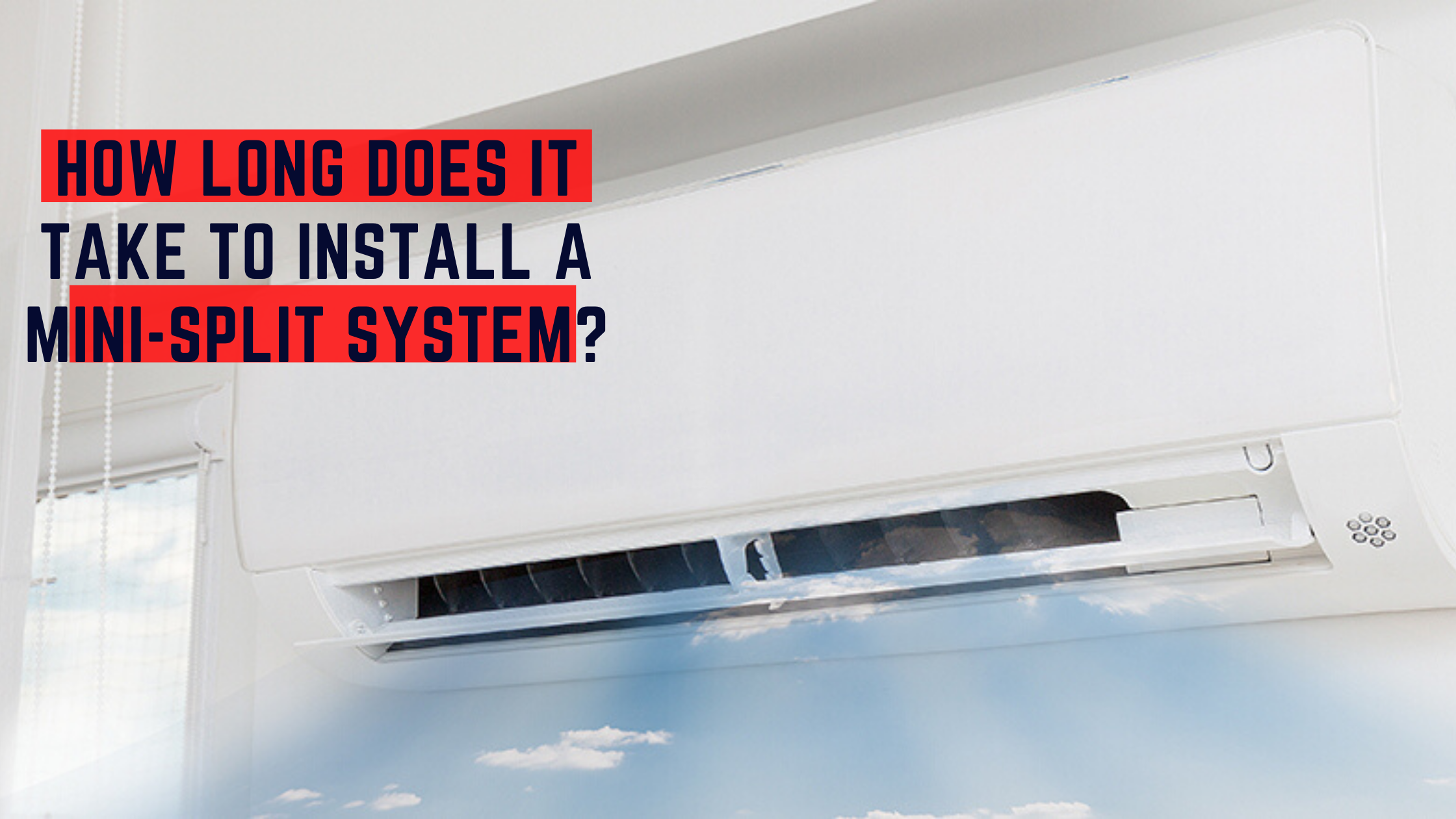Hi! In full disclosure, we may earn money from companies (like Amazon) mentioned in this post if you make a purchase through our links. Thanks in advance for the support!
Mini-split units and ductless systems go hand in hand together to create multi-zoned and efficiently air-conditioned spaces. Because of this, mini-splits are assumed to only work with ductless systems. But, this isn’t entirely true. Although it’s not a popular application, mini-split units can also be used in a ducted AC system.
CALL NOW FOR A QUOTE: 855-920-1857
Mini-Split Air Conditioning System Explained
A mini-split air conditioning system works pretty much like a smaller version of the traditional centralized AC system. It has three main components: an indoor air handler, an outdoor condenser/compressor, and a conduit holding electrical, refrigerant, and drain lines.
It does its work by taking out the warm air from a space and cycling it through a series of refrigerant lines and coils until it reaches the target temperature. The air-conditioned air is blown out through the indoor air handler to make the space cooler or hotter.
The air handler can be installed on the ceiling or floor. But the easiest and most popular type is the wall-mounted indoor unit.
As the system takes out humidity from the AC zone, it also collects moisture that is also drained out through the slim pipes.
Ductless Connection
The main reason why mini-splits are used for ductless AC systems is that it cycles and distributes the air without the need for complex ductwork. Instead of having to build the complicated duct system in your house or building, the exchange of air goes through a slim tubing carrying the condensate drain, power, and refrigerant lines.
Because of the small pipework that is needed for a ductless system, mini-splits are the perfect units for it.
CALL NOW FOR A QUOTE: 855-920-1857
Ductless Mini-Split Benefits
The first and probably the best advantage of a ductless mini-split system is its energy efficiency. Transferring air through the large, complicated ductwork of a traditional central air system doubles the chances for leaks. When this happens, more energy is consumed to move hot and cold air. With ductless mini-split systems, conditioned air is distributed faster with less energy consumption.
Another benefit of going ductless is how easy it is to set up AC zones. You can connect up to eight indoor units to a single outdoor compressor. By doing so, you get to create AC zones that can have individual thermostat settings per indoor unit. The indoor units can also be turned on and off individually without affecting the other cooling and heatings zones.
There is also the ease of installation. The simplest set up of a ductless mini-split involves mounting the air handler indoors on an outside wall, punching out a small three-inch hole for the conduit, setting up a good spot for the outside compressor, and connecting the indoor and outdoor units.
For homes that do not have existing ductwork and for homeowners who are not willing to spend time and money on heavy and complicated construction, going for a ductless mini-split system could be the best alternative to a centralized AC system.
Ducted Mini-Split
It isn’t the common way to go but the ducted mini-split can be a good option for some spaces too. Ducted mini-split systems are still more energy-efficient compared to traditional central air conditioning.
It can be less efficient than a ductless system because it takes more work to transfer the air through the ductwork but it still works great with less energy wasted. Converting to a mini-split system can get energy savings between 30% to 40% even when ducted.
Homeowners who previously had a traditional central HVAC system also get to take advantage of existing home infrastructure with some tweaking. The key with any HVAC system is to have the proper sizing and capacity for the corresponding heating and cooling requirements of the space.
Zoning is also less complicated because a mini-split system does not rely on a single air handler for several rooms. You can still create AC zones by organizing the ductwork connecting your indoor air handlers and outside unit.
This is also why you get to save on energy consumption by opting for a ducted mini-split system. Not all rooms have to have the same temperature and zones that do not have to be air-conditioned can have their air handlers turned off.
One more reason to go for ducted mini-splits is that the indoor units are often less obstructive than the wall-mounted and cassette units in a ductless mini-split system.
Mini-Split Costs
One drawback when it comes to mini-split systems is that they can be quite expensive to buy and install.
A mini-split installation typically runs between $1,300 to $15,500. The amount depends on the brand and capacity of the mini-split units. Installation costs are also a huge part of the expense. Almost all brands of mini-split systems require their units to only be installed by HVAC professionals and for good reason. Read our article on mini-split costs here.
The installation process deals with a lot of planning and handling of vulnerable materials and equipment. It is also best to have an expert assess the air conditioning needs of the space so that they can apply the appropriate and more efficient air solutions for the space.
This does come with a cost but it will get you better energy savings and a longer life for your HVAC system.
Aside from equipment and labor costs, materials can also add to the expense of setting up a mini-split AC system. The contractor will need to use the proper amount of materials to connect your indoor units to the outdoor unit.
The outdoor unit may also need to have a platform built so that it can be placed safely and securely outside the home.
In a ducted mini-split system, more materials and labor are needed to create the ductwork. For spaces with existing ductwork in place, there are still some renovations required and the structure needs to be assessed for better planning, sealing, and cleaning. Especially in older homes, the duct system also needs to be checked for pests.
Ductless Pros and Cons
Pros
- Energy Efficient
- Lower Energy Bills
- Easy Installation
- AC Zoning
Cons
- Initial Costs
- Large Indoor Air Handlers
Ducted Pros and Cons
Pros
- Energy Efficient
- Low Energy Bills
- Makes Use of Existing Infrastructure
- AC Zoning
- Less Visible Air Handlers
Cons
- Higher Initial Costs Compared to Ductless
- Less Energy Efficient vs Ductless
- Takes Longer to Install Compared to Ductless
Choosing Between Ductless and Ducted
The best feature of mini-splits would still be its high energy efficiency and AC zoning.
If you have to choose between a ducted and a ductless system, there are a few things you have to keep in mind. One, how much time can you spend on installation. Two, the structure and interior design of your space. Three, how important is energy efficiency to you. And four, the installation costs that will come with it.
A ducted system would be great for homes that are ready for ductwork reconfiguration and/or construction. It is also a good way-around to avoid obtrusive air handlers for better home aesthetics.
Going ductless can be better for those who cannot allot that much time into installation and construction. With less labor time and construction materials, the cost of installation becomes cheaper with a ductless mini-split system. Ductless also tends to be more energy-efficient so you can save more on energy bills.
The best route is still to contact an HVAC professional to get a better assessment of your home’s cooling and heating needs. Whether you go with ducted or ductless, you would want to get the best out of your investment. Getting expert advice will lead you towards that direction better.


